The German Shepherd Dog; Working Dog First and Foremost
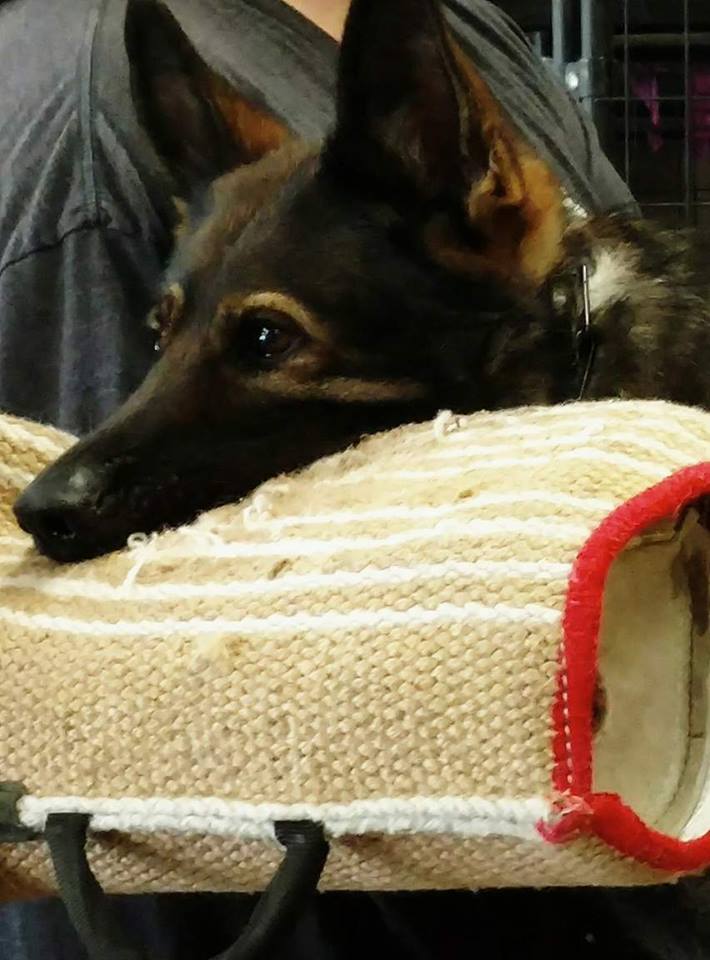
The German Shepherd Dog; Working Dog First and Foremost
written by Nate Harves
Few animals elicit the imagery by mere mention of their name; brave police dog, tireless search and rescue worker, fearless war hero, family guardian, farm hand, loving friend, companion and childhood playmate.
It has been said that the German Shepherd Dog is never first at anything, but second best at everything. Encompassing many venues of duty and service, this versatility is why the GSD more than any other has become iconic of the true working dog.
The following quote references working dogs. It has been widely taken for granted because many use this quote, but sadly very few take time to read it and really apply what the author said.
"The breeding of Shepherd dogs must be the breeding of working dogs. This must always be the aim or we shall cease to produce working dogs."
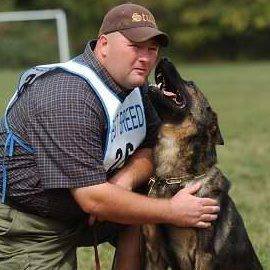
This is a very simple and direct statement. It is 100% correct. All those images and honorable titles assigned to the breed come from the thinking that produced this statement and subsequently created this extraordinary animal. Many forget, however, that this statement is the benchmark for the irreplaceable standard that as guardians of this beloved breed should guide us as we continue its working abilities.
We must think of the GSD just as we would any worker. If you want them to do the job, give them the proper tools! We must make certain they possess the drives and overall makeup necessary to complete the tasks asked of them. The inherent qualities of the breed must remain protected and continued for future generations of service.
Correct selection of the right candidate with the overall genetic makeup allows the GSD to complete the job required; the dog is somewhat natural to the task at hand and been given the tools. Just because the dog excels at one task, does not mean he will excel at another. There are many "homes" for the GSD; find the dog that best suits the need. This thinking though is not breed preservation, it is breed placement. To confuse them for breeding working dogs is incorrect.
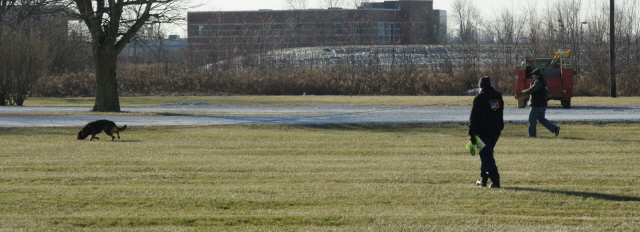
One night after training in which we applied the practical and worked our dogs, we discussed what we saw. These are very enjoyable times for me because I enjoy provoking thought and love to speak to like minded intelligent people about our GSD’s with an open exchange of knowledge. During the conversation I explained that the types of dogs mentioned above were the run-off from breeding the really good dogs. That great pets don’t make great police dogs, and top sport dogs aren’t always the best protectors, and that the same dog that would die to protect you might care less about when he eats or when you’ll throw his ball. They may each fulfill their individual tasks very well, but they are run-off creek beds so to speak. They are not the main rivers that supplied them. I expressed my belief that the truly great dogs possessed all the qualities that made the others individually good at what they did. It was through breeding those great dogs that these dogs came about, and not vice versa. I explained that to breed working dogs, it is important to find the great dogs that can do it all and include them in breeding programs wherever possible. Each of the other dogs had value for sure and could be used, but the benefit was not as great and the risk larger. It reminds me of a favorite quote about training Greek warriors:
"Out of every one hundred men you send me, ten of them shouldn’t even be here!
Eighty are nothing more than targets!
Nine of them are real fighters, and we are happy to have them, for they the real battle make.
Ah, but one... One is a warrior! And I must find him; for he will bring the others home!"
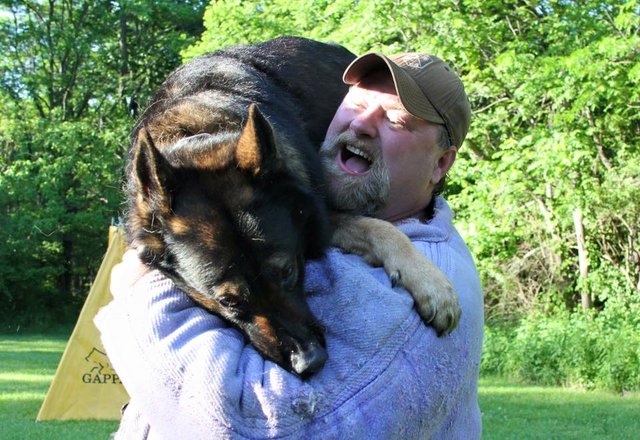
The great dogs possess all the things thought of when thinking of the German Shepherd Dog including some things many people actually steer away from amazingly enough. The effects of this can be seen by many. For example, my belief has always been that certain qualities like fight drive, hardness, aggression, and power have to be protected and retained into the breeding of working dogs. Many times these qualities are left out of breeding programs because they sometimes deter from the individually tasked dogs. People become so consumed in reproducing the "creek bed dogs" that they fail the "river dogs" that created them.
A good friend, (with FEMA Urban Search and Rescue Task Force), recently echoed these feelings with a conversation he had with a German trainer years ago (un-named here because I don’t want to seem negative toward anyone). This man stated that a good sport dog had to be 60% prey and 40% defense; a good police dog was 60% defense and 40% prey, and this is how it must be. This thinking illustrates what we’ve discussed; i.e. the individually tasked dog. My friend didn’t think it "had to be that way" either and some time later he asked the famous Reinhard Lindner for his thoughts on this statement.
Reinhard calmly stated. "I don’t agree with that. The right dog can do it all."
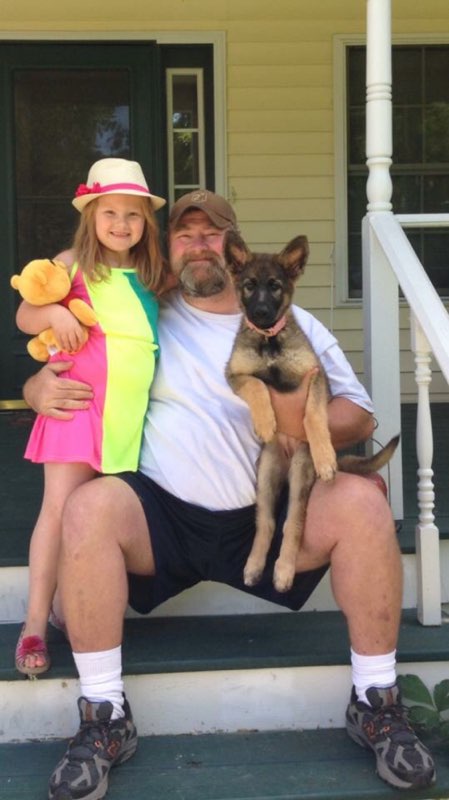
Reinhard was known for his ability to read dogs and his touch with them. He was especially fond of very powerful, hard dogs and knew their value in his breeding program at his successful working line kennel "vom Höllbachgrund". An SV Judge and mentor to a great many people, Reinhard understood that powerful dogs must be used to retain those qualities for future service.
It doesn’t help that terms and behaviors like hardness, aggression, and fight drive are often some of the least understood, even amongst seemingly knowledgeable dog trainers and breeders. These terms are often misdiagnosed or misunderstood altogether, adding to their negative connotations that steer some from their retention within the breed. Through influences like liability and political correctness, the image of a dog with strong social aggression has become frowned upon. This thinking is incorrect and a terrible path to take. Instead, the people that dedicate themselves to the future of the breed must exhibit responsibility, educating others not only to the value, but for the absolute need of dogs of this type.
A woman with a German Shepherd Dog clone (he only looked like one and hadn’t had an authentic GSD in his blood for several generations it seemed) asked if my dog would ever be capable of biting someone. I told her my dog was social and safe to be around but, yes, in the right situation he would bite. I was curious why she had asked that very targeted question.
She proudly proclaimed, "I am a breeder. I would never have a dog that would bite anyone. Dogs that are capable of biting people should be put down." I asked how she produced dogs for sport, police, and personal protection. She confidently said, "I breed dogs for the family."
Not only did she not want or retain the qualities we’ve mentioned in her breedings, she cared nothing for the preservation of the working GSD. She lacked the understanding that good working dogs still make good family dogs from the very stock she avoided. But she was a "breeder" nonetheless.
Recently while helping a friend compete her dog at a trial, a man showed up with his son and their dog, the type of man that has never trained or trialed a dog but loved to buy titled dogs and breed them. He didn’t hesitate to ask during a break if someone could work his dog, as if wanting to show him off to the crowd.
The dog, obviously sharp and uneasy about what was about to happen, quickly glanced around. A helper approached and gave the back-tied dog an easy prey grip. The dog was very noisy on the sleeve much to the delight of this man and his son, who loved the idea of an aggressive dog, confusing this dog for a good dog with strong social aggression. The helper brought the padded stick near the dog. The dog popped off the sleeve and backed up several feet, eyes widened. After this minimal threat, it took lots of prey work to get the dog to reengage.
Someone stated, "The dog is a little nervy"— a polite understatement! The man’s son angrily told the crowd "This dog will kill you. He will gut you and kill you!" (Actual quote— not exaggerated in the least.)
Someone reading this just laughed because they were there and witnessed this. The man and his son tried to convince all present how hard and fearless the dog was. He bragged about aggression and how he "didn’t have a sport dog" on his property. The schutzhund crowd quietly had a good laugh. Unfortunately, this is a perfect example of someone who not only doesn’t understand dogs, but is not helping the public understanding of the need for aggression, hardness, and power within the breed. Completely misdiagnosed, and misrepresented. And certainly breeding.
These examples illustrate two ‘breeders’ who have broken away from breeding true working dogs. Although the dogs they possess (no matter how imperfect or unbalanced) have a home somewhere that wants this type of dog, they have mistakenly concluded that this type of dog is what should be bred and justified its need to be reproduced. The reality is that both were at opposite ends of a spectrum and the dogs they held at leash were generations past where a good, balanced dog had once been.
The original thinking behind breeding working dogs splintered into breeders of only sport, show, pet, etc., and not without effect. As our needs change and we ask more and more from our dogs, this splintered breeding has led us from the simple path laid out for us. People who need strong dogs have discovered how difficult it can be to find dogs capable of excelling at the overall work because many are missing the necessary traits. We demand more, yet give less to their production and preservation. We breed dogs without titles that are not breed-worthy and we breed dogs that are not breed-worthy just because they’re titled. We breed for color, and because she ‘wants to have puppies’. We breed for money, greed and make excuses for the faults in our dogs as if our justifications erase the genetic flaw. We watch a "mule in the work" sit straight and cheer the success of the breed. Sounds pretty silly, doesn’t it?
As a schutzhund enthusiast I believe schutzhund protects working ability because it provides a picture of the total dog in many areas and qualifies its strengths and weaknesses—if you are truly watching the dog’s work.
However, schutzhund is far from perfect. I do not approve of watering down things like aggression, power, hardness and fight drive with rules, routines, and judging trends. We see dogs given pronounced courage in their scorebooks when the videos of their work showed a complete lack thereof, even to the untrained eye. Those involved in schutzhund are not without fault when they steer their breeding programs simply to attain a certain look or color, higher points, or to peddle puppies.
Using dogs with lower drives because the control can be better, or dogs with lower aggression and fight drive because the barking and outs are cleaner is fine if your only intention is to have fun in sport. However, when the result is used to justify this dog breeding, we begin the path down the slippery slope. When we encounter the effects of this breeding, we accommodate the change with new rules and routines, essentially denying that anything has changed at all. The standard is lowered, so that more can obtain and that is a very dangerous thing to do.
"The reminder here is that the origin of Schutzhund and the rules under which we ‘compete’ were developed to ‘test’ the dog’s temperament (courage and hardness NOT ‘play prey’ or ‘ball’ drive) for breed suitability - not for a sport.
We cannot lose sight of the fact that Schutzhund is a BREED SUITABILITY test or we do a disservice to the German Shepherd Dog. Conscientious breeders should train and test their bloodlines…not simply be in the ‘puppy business."
~Gunther Diegel, Director of Schutzhund Judges for the Verein für Deutsche Schäferhunde (SV) in Germany
I saw a dog once with very correct work, but the dog was very flat. Someone commented how obedient the dog was. To me, it wasn’t that this dog was as obedient, as that he didn’t possess the drive necessary to be disobedient. Don’t get me wrong, trainability is a great quality. However, with today’s training knowledge and tools available, we should not confuse trainability with natural ability. Just because the dog can be made to do something, doesn’t mean it has been given the tools to make it want to do it or that it can genetically pass on that behavior. We should separate this thinking from breeding to ensure we do not confuse our training abilities with the dog’s capacity to perform and exhibit natural ability for the task at hand. Our main goal should not be to become better dog trainers! Our main goal is to produce dogs that naturally excel at the work.
As mentioned, the GSD wears many job titles. Tell a child stricken with cancer that the rescue that visits her in the hospital licking her face isn’t a good German Shepherd Dog. Tell the woman who can sleep now and doesn’t live in fear of her abusive ex-boyfriend that because her dog will bite someone he needs put down. Tell the old man, lonely and widowed, that his no-ball-drive dog beside him at dinner each night isn’t a good dog. Nonsense! We all love our dogs and we are glad for each role they fill in our lives. However, we owe it to future generations of people to make sure that whatever need they have, there will be a GSD there for them, too. We do that by identifying the very best we have to offer and preserving the breed’s extraordinary qualities, because at the end of the day, the German Shepherd Dog wears only one title. The most important of all;
"Working Dog"
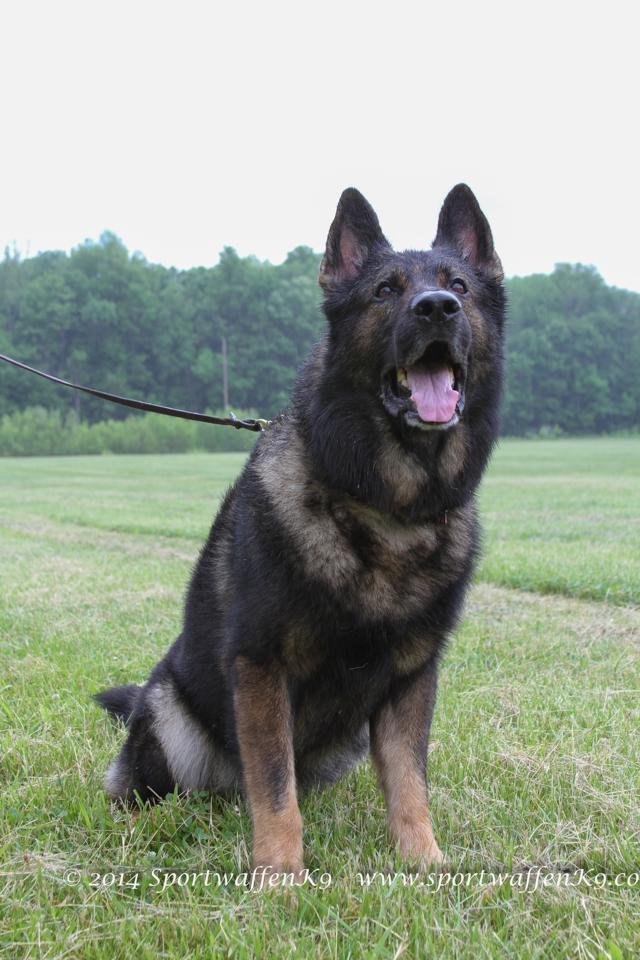
Excellent article!
Congratulations @germanshepherd! You received a personal award!
Click here to view your Board of Honor
Congratulations @germanshepherd! You received a personal award!
You can view your badges on your Steem Board and compare to others on the Steem Ranking
Vote for @Steemitboard as a witness to get one more award and increased upvotes!